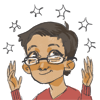Serendip is an independent site partnering with faculty at multiple colleges and universities around the world. Happy exploring!
You are here
Home » Web Paper or Special Event
By aclark1
December 11, 2014 - 01:44
Over the years, technology has been groundbreaking. Recent innovations have been released that could possibly change the world. However, these original gadgets have become so addictive, that people have became more depending on their personal gadgets. Ranging from smartphones to laptops-- too much exposure can harm human health and in Today’s times, it is almost impossible to find anyone without the latest gadget in the palm of their hand. But, what happens when it’s time to dispose a gadget?
December 10, 2014 - 22:58
Silvi Shameti
Innovation in education can exist in many different forms; it can be in the curriculum that a teacher carefully and deliberately chooses in order to focus on specific things; it can be in the methods a teacher uses in the classroom and the expectations and standards they set for their students; it can be in the way they handle their students’ backgrounds and take into account their cultural knowledge; and it can be in the way they make use of resources outside of the classroom, like a student’s family or community.
December 10, 2014 - 22:08
To understand what innovation in education can be, it is important to understand where the need for innovation comes from. The word itself implies a process of making something new and better, and is often attributed to using some new tool that previous did not exist. Thus, the idea of innovation in education is often connected to the use of more advanced technologies in the classroom and as a tool for learning. However, the form of education that we are referring to in our framing of the word ‘innovative’ is not reliant on utilizing a previously inaccessible resource, but is rooted in exploring the relationships between people, and how an educational space can be changed depending on how we choose to, and are able to, think and interact.
December 10, 2014 - 00:50
Innovation in education is the response to the different identities of the learners in a classroom. It is creating a culturally responsive curriculum that places the learner at the center. Because there are so many different kinds of learners, different methods/vehicles of teaching have to be practiced in order to support as many learners as possible. Innovation in education is finding out new ways of doing things in a learning environment. In relation to the identities of the learners, Innovation is using their identity to come up with new ways of teaching the material. A great example of a teacher that practiced this learner-centered culturally responsive curriculum is what Dr. Joy Fluallen spoke about during the panel.
December 9, 2014 - 10:39
By wwu2
December 9, 2014 - 01:23
Marjorie Wu
Paper #12
December 7th, 2014
How to Build a Better Home
December 8, 2014 - 17:33
“The advantage of speaking about ecologies rather than societies is that it reminds us how our societies are intertwined with a broader natural world that they draw on to sustain themselves, that they are affected by, and that they affect”(Bryant). What constitutes ecological intelligence? I propose it is realizing the importance of “ecological intersectionalism”. Granted intersectionalism is a word we made up in ESem, it is very useful in fully painting the picture that it is necessary to acknowledge that something isn’t an entity of its own.; everything is interconnected in some way.
December 7, 2014 - 17:22
Selena Martinez
Esem
Paper #13
12/7/14
December 7, 2014 - 17:01
Fiction often tackles the issue of western society’s exploitation of the environment. It allows readers to view a world without them and see certain causes and effects without any real-life repercussions. Inevitably in this type of fiction, there is one person who is more ecologically aware than the rest, usually due to some predisposed connection with the environment. In both Ursula Le Guin’s sci-fi short story “Vaster Than Empires and More Slow” and Nickelodeon’s fantasy cartoon Avatar: The Legend of Korra, each showcases a character like this. How applicable are these stories and characters to real life?
December 7, 2014 - 16:59
The cultural, political, and materialistic myth of disconnection and destruction: people are unique, alone, and more intelligent than any other species. It seems that we are only separate from the natural world in the way we use language and politically shape the identity of our species. Part of people’s resistance to accepting the idea that people depend on and are dependent on nature is that to fully accept this idea means that people must therefore succeed to “nature” and all of its systems, which are mostly unknown and unexplored. To admit that people are a link in a flow of entities that run through all life is to relinquish a dominating human idea that dictates that people are above and separate from their surroundings.








